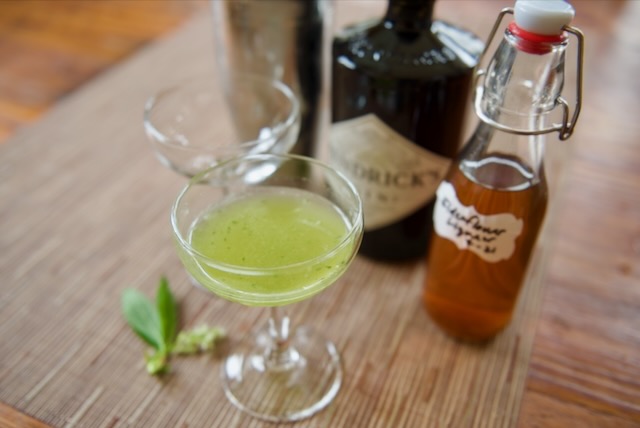
THE OSOBERRY, aka Indian plum (Oemleria cerasiformis), is one of the first shrubs in the Pacific Northwest to leaf out and flower, heralding spring and warm days ahead. This makes it a welcome sight in lowland forests after a long winter.
Ranging from southwestern British Columbia to California, osoberry inhabits lower elevation mixed forests west of the Cascade Crest, where it grows to a maximum height of about twenty feet. Its small purple fruits are edible but mostly pit, with an astringency that could probably be made palatable with a food mill, sugar, and determination. I leave them for the wildlife.
The newly leafed-out foliage is another matter. Easily nabbed and redolent of cucumber or pickled melon rind, the bright green leaves call out to the mixologist. Experiment as you wish. This delicious drink was concocted with five or six young leaves, muddled in an ice shaker, along with the juice of half a lime, a splash of my elderflower liqueur, and good gin—a fine combination for an early spring happy hour.

